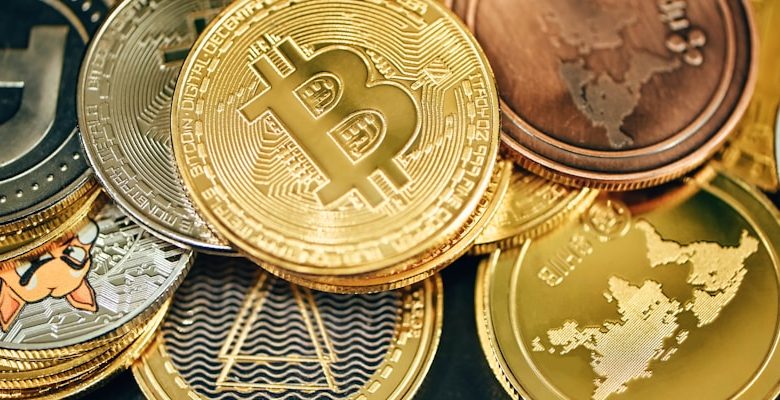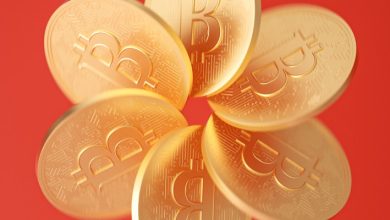What is Tokenization? How It’s Transforming Assets on the Blockchain

- Understanding Tokenization and Its Role in the Blockchain Ecosystem
- The Basics of Tokenization: What You Need to Know
- Tokenizing Assets: A Game-Changer for the Financial Industry
- Exploring the Benefits of Tokenization for Investors and Businesses
- Regulatory Challenges and Opportunities in the Tokenization Space
- The Future of Asset Tokenization: Trends and Predictions
Understanding Tokenization and Its Role in the Blockchain Ecosystem
Tokenization is a revolutionary concept in the blockchain ecosystem that is transforming the way assets are represented and traded. By converting real-world assets into digital tokens, tokenization allows for greater liquidity, fractional ownership, and increased accessibility to a wide range of assets.
Tokens represent ownership of an underlying asset, such as real estate, art, stocks, or commodities. These tokens are stored on a blockchain, which provides a secure and transparent ledger of ownership. Tokenization opens up new opportunities for investors to diversify their portfolios and participate in markets that were previously out of reach.
One of the key benefits of tokenization is the ability to fractionalize assets, allowing investors to own a percentage of an asset rather than the whole thing. This lowers the barrier to entry for investors and provides opportunities for greater diversification. Additionally, tokenization enables assets to be traded 24/7 on decentralized exchanges, increasing liquidity and reducing transaction costs.
Overall, tokenization is a game-changer in the world of finance and investing. It democratizes access to assets, creates new investment opportunities, and enhances the efficiency of asset trading. As blockchain technology continues to evolve, tokenization will play an increasingly important role in shaping the future of the financial industry.
The Basics of Tokenization: What You Need to Know
Tokenization is a process that converts real-world assets into digital tokens on the blockchain. This technology is revolutionizing the way assets are bought, sold, and traded. Tokens represent ownership of an asset and can be easily transferred between parties. They provide greater liquidity and accessibility to assets that were previously illiquid and difficult to divide.
One of the key benefits of tokenization is the ability to fractionalize assets, allowing investors to buy and sell small portions of high-value assets. This opens up investment opportunities to a wider range of individuals who may not have had access to traditional asset classes.
Tokenization also offers increased security and transparency. Transactions are recorded on the blockchain, providing an immutable and transparent ledger of ownership. This reduces the risk of fraud and ensures that ownership rights are securely established.
Furthermore, tokenization streamlines the process of asset trading by eliminating the need for intermediaries. Smart contracts automate the transfer of tokens, reducing the time and cost associated with traditional asset transfers. This efficiency benefits both investors and issuers by lowering transaction fees and increasing market liquidity.
Overall, tokenization is transforming how assets are managed and traded, offering a more efficient, transparent, and accessible way to invest in a wide range of asset classes. As this technology continues to evolve, it has the potential to revolutionize the financial industry and unlock new opportunities for investors around the world.
Tokenizing Assets: A Game-Changer for the Financial Industry
Tokenizing assets has emerged as a game-changer in the financial industry, revolutionizing the way assets are bought, sold, and traded on the blockchain. Tokenization involves converting real-world assets into digital tokens that can be securely stored and transferred using blockchain technology.
One of the key benefits of tokenizing assets is increased liquidity. By fractionalizing assets into smaller, more affordable tokens, investors can now access markets that were previously out of reach. This democratization of asset ownership has the potential to open up new investment opportunities for a wider range of individuals.
Moreover, tokenization also offers greater transparency and security. Each token represents a share of the underlying asset, providing investors with clear ownership rights. Additionally, transactions on the blockchain are recorded in a tamper-proof ledger, reducing the risk of fraud and ensuring the integrity of the asset.
Furthermore, tokenization can streamline the process of asset management and compliance. Smart contracts can be programmed to automate tasks such as dividend payments, voting rights, and regulatory reporting. This not only reduces administrative costs but also enhances the efficiency of asset management processes.
Overall, tokenizing assets is transforming the financial industry by making it more accessible, transparent, and efficient. As the technology continues to evolve, we can expect to see even greater innovation in the way assets are tokenized and traded on the blockchain.
Exploring the Benefits of Tokenization for Investors and Businesses
Tokenization offers a range of benefits for investors and businesses looking to leverage blockchain technology to transform their assets. By tokenizing assets, investors can enjoy increased liquidity, fractional ownership, and enhanced transparency. Businesses, on the other hand, can access a wider pool of potential investors, streamline fundraising processes, and reduce administrative costs.
For investors, tokenization opens up new opportunities to diversify their portfolios and access assets that were previously out of reach. By breaking down assets into smaller, more affordable tokens, investors can spread their risk across a broader range of assets. This fractional ownership model allows investors to participate in markets that were once reserved for institutional players.
Businesses can also benefit from tokenization by tapping into a global network of investors through blockchain technology. Tokenizing assets allows businesses to reach a wider audience of potential investors, breaking down geographical barriers and reducing the reliance on traditional financing methods. This increased access to capital can help businesses accelerate growth and innovation.
Furthermore, tokenization can streamline the fundraising process for businesses, reducing the time and costs associated with traditional financing methods. By digitizing assets and automating transactions through smart contracts, businesses can eliminate the need for intermediaries and paperwork, making the process more efficient and cost-effective.
Overall, tokenization offers a range of advantages for both investors and businesses, revolutionizing the way assets are bought, sold, and managed on the blockchain. As this technology continues to evolve, we can expect to see even more innovative use cases and opportunities emerge in the tokenization space.
Regulatory Challenges and Opportunities in the Tokenization Space
One of the key challenges in the tokenization space is navigating the complex regulatory landscape. As more assets are tokenized on the blockchain, regulators are working to catch up and establish guidelines to ensure compliance. This presents both challenges and opportunities for businesses operating in this space.
Regulatory challenges can include uncertainty around how existing laws apply to tokenized assets, as well as the need to comply with regulations across different jurisdictions. Businesses must stay informed about evolving regulations and work closely with legal experts to ensure they are operating within the bounds of the law.
Despite these challenges, there are also opportunities in the regulatory space. Clear guidelines from regulators can provide legitimacy to tokenized assets, increasing investor confidence and opening up new avenues for growth. By proactively engaging with regulators and demonstrating a commitment to compliance, businesses can position themselves as leaders in the tokenization space.
Overall, navigating regulatory challenges in the tokenization space requires a proactive and informed approach. By staying up to date on regulations, seeking expert guidance, and engaging with regulators, businesses can mitigate risks and capitalize on the opportunities that tokenization presents.
The Future of Asset Tokenization: Trends and Predictions
Looking ahead, the future of asset tokenization appears to be promising with several trends and predictions emerging in the blockchain industry. One major trend is the increasing adoption of security token offerings (STOs) as a more regulated and compliant way to tokenize assets. This trend is expected to continue as more investors seek opportunities in the tokenized asset market.
Another trend to watch out for is the rise of decentralized finance (DeFi) platforms that enable users to tokenize a wide range of assets, from real estate to art to intellectual property. These platforms offer greater liquidity and accessibility to asset owners, opening up new possibilities for investment and ownership.
Furthermore, the integration of non-fungible tokens (NFTs) into the asset tokenization landscape is set to revolutionize the way unique assets are represented and traded on the blockchain. NFTs have already gained traction in the art and gaming industries, with potential applications in tokenizing digital collectibles, music rights, and even real-world assets.
In the coming years, we can expect to see more traditional assets, such as stocks, bonds, and commodities, being tokenized on the blockchain. This shift towards digital ownership and fractionalization of assets will democratize investing and provide new opportunities for asset diversification.



